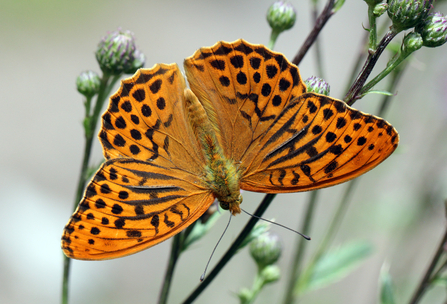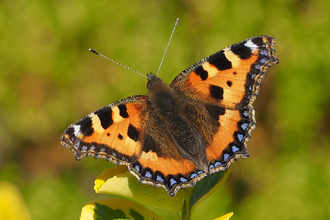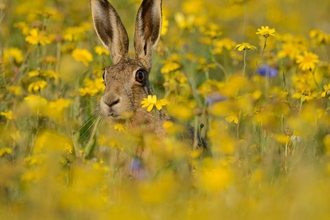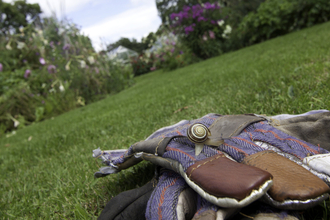Take a stroll in the right Worcestershire woodland at this time of year and you might spot an orange blob streaking past your head. If you're lucky, you might chance upon the courting dance of these beautiful butterflies. As mating rituals go, that of the silver-washed fritillary is one to watch. The female flies in a straight line and the male loops his own flight underneath, in front and around her. Eventually, once she's decided that his moves are good enough, the female lands to be showered with his scent scales before mating takes place.
Silver-washed young are fussy eaters, munching only on dog violets found in shady and semi-shady areas of woodlands, so conscientious mums can sometimes be seen crawling through vegetation to ensure that there will be plenty of suitable food before she starts to lay her eggs. Once she's found the food, the female flies to a nearby tree to lay her eggs, often amongst the moss on the north side of a tree (although over-eager mums have sometimes accidentally mistaken trouser legs of nearby naturalists instead).
The eggs hatch after a couple of weeks and the caterpillar starts life by eating the eggshell (it contains a valuable nutrition boost) before finding a crevice in the bark of the tree and spinning themselves a silk pad on which to hibernate. These tiny caterpillars snooze their way through the winter and when they wake in spring, they wander down the tree to locate the now-blossoming dog violets that mum had so carefully sought out the summer before. They'll alternately munch away on the young shoots and bask in sunny spots (sounds great). The caterpillars moult their skin four times before pupating and emerging as an adult in the summer, ready to start the cycle all over again.





